The desktop PCs that wowed us at CES 2018
There’s life in the PC yet
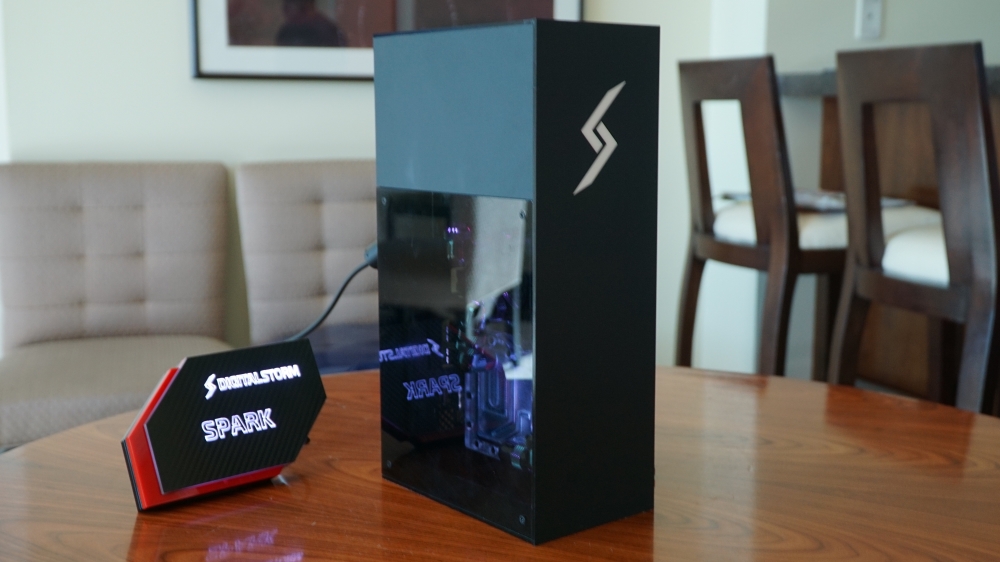
CES 2018 has been a great event for new and innovative technologies, but there have also been some brilliant examples of traditional PCs at this year’s show.
While some may argue that desktop PCs are going out of fashion, the machines we’ve seen at CES 2018 show there’s plenty of life left in the form factor, with no shortage of desktops offering power and performance that mobile devices can only dream of.
And, while the traditional PC has been around for decades, we're still seeing how far some manufacturers are willing to push the envelope to create some truly impressive and desirable machines – here are the best we’ve seen at CES 2018.
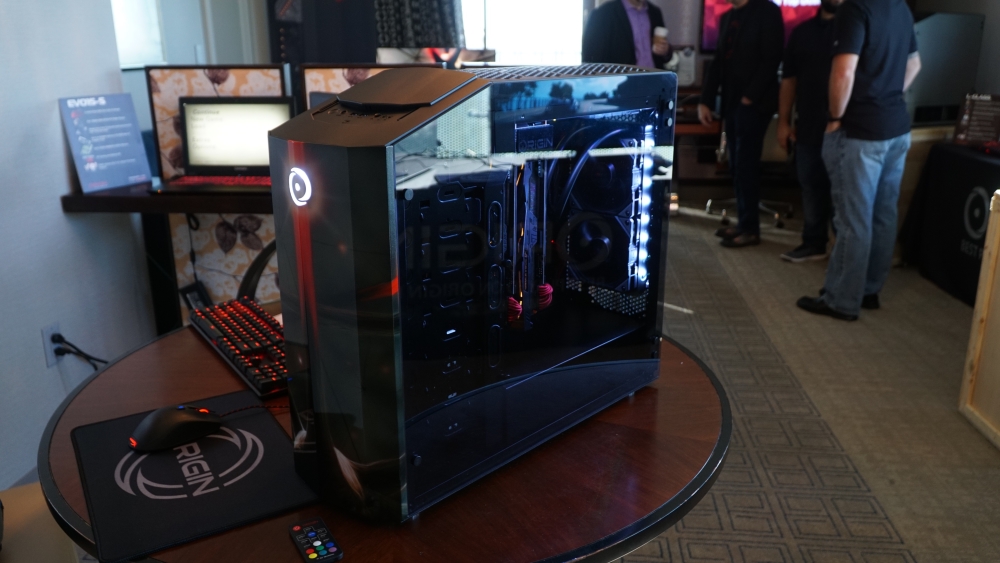
Origin Millennium
Origin PC showed off an innovative redesign of its Millennium mid-tower gaming PC, with a new feature that quickly turns it into a larger Genesis full-tower gaming machine. This is done by adding the Super Tower Bottom expansion kit, which gives users the space to add dual 360mm radiators to keep the PC running cooler, as well as adding up to 12 3.5-inch drives, or 24 2.5-inch drives!
This level of customization is pretty neat, and the new PC cases feature Origin PC’s Variable Mounting Technology, which allows the motherboard to be mounted in four different orientations. Origin PC will then fill the PC with some of the latest PC components of your choice, creating a flexible and upgradable setup.

Digital Storm Spark
We love a small-form-factor desktop PC here at TechRadar, and Digital Storm certainly impressed us at CES 2018 with the Spark, a Micro STX gaming desktop that measures just 6 x 4 x 12 inches – the smallest desktop the PC builder has made to date.
Despite its small size, it can feature up to a GTX 1080 graphics card and Intel Core i7 8700K processor, making it a very capable gaming PC indeed. These high-end components are kept chilled with a custom hardline liquid cooling system.
Digital Storm has also answered one of our concerns about small-form-factor PCs with the Spark, by ensuring that it’s easy to upgrade and expand in the future, making this a tiny PC that’s plenty future-proof, and one of the best PCs we’ve seen at CES 2018.
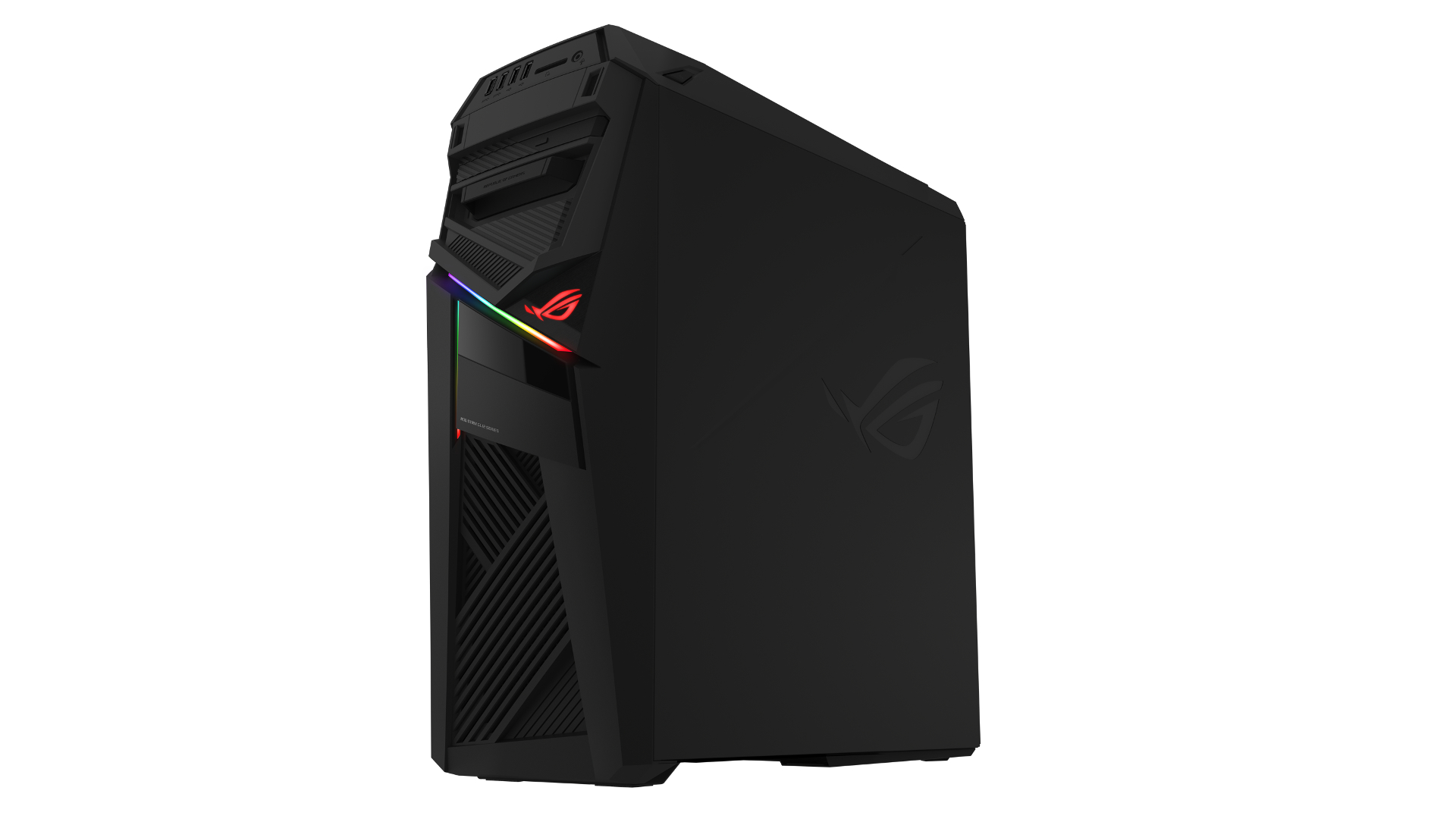
Asus ROG Strix GL12
The Asus ROG Strix GL12 is a gaming PC built around Intel’s latest 8th-gen processors, offering a choice of a Core-i7 8700/8700K (six-core with Turbo up to 4.8GHz), or a Core i5-8400 CPU.
That’s backed up with one of Nvidia’s GeForce GTX 1080 graphics cards, and 8GB of DDR4 system RAM (running at 2666MHz). Storage includes options up to a 512GB PCIe SSD, and up to a 2TB hard disk.
The design – which Asus describes as ‘unconventional’ and ‘aggressive’ – certainly stood out on the CES show floor, thanks not just to its angular design, but also the use of Aura Sync customizable lighting. This can be synced with other Asus gaming peripherals that also use the Aura Sync lighting system.
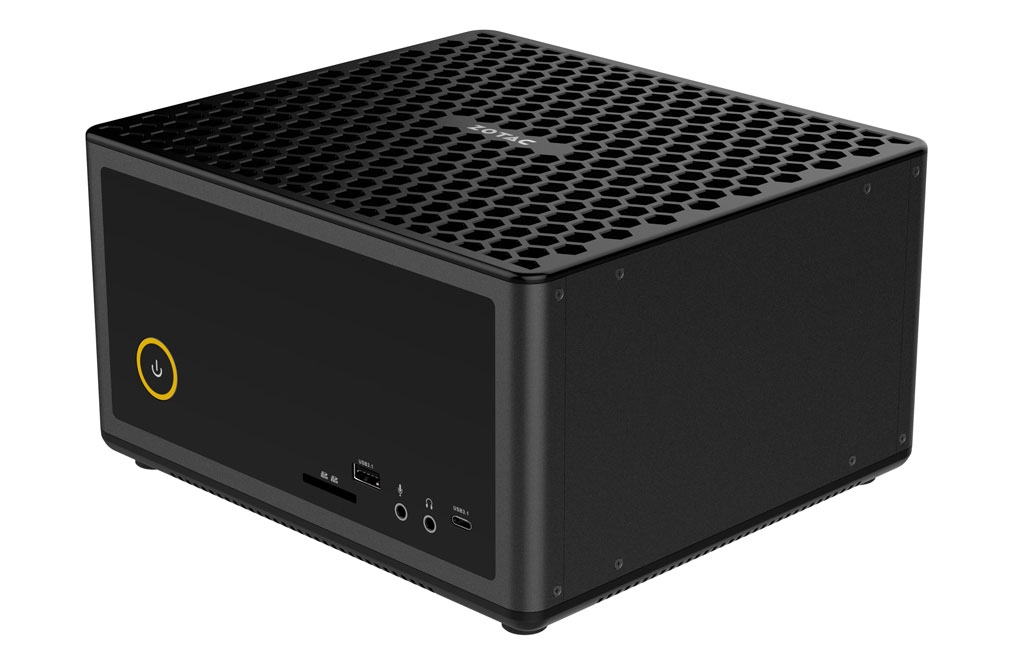
Zotac Magnus
Zotac showed off its refreshed lineup of mini PCs, including the Magnus gaming mini PC, which for the first time features a 6-core 8th generation Intel processor.
Zotac hasn’t revealed much more about the specs of its new Magnus gaming mini PC, but the thought of having a powerful new 8th-generation processor in such a small desktop PC has got us very intrigued, and we’re looking forward to giving it a full review when it becomes available later this year.
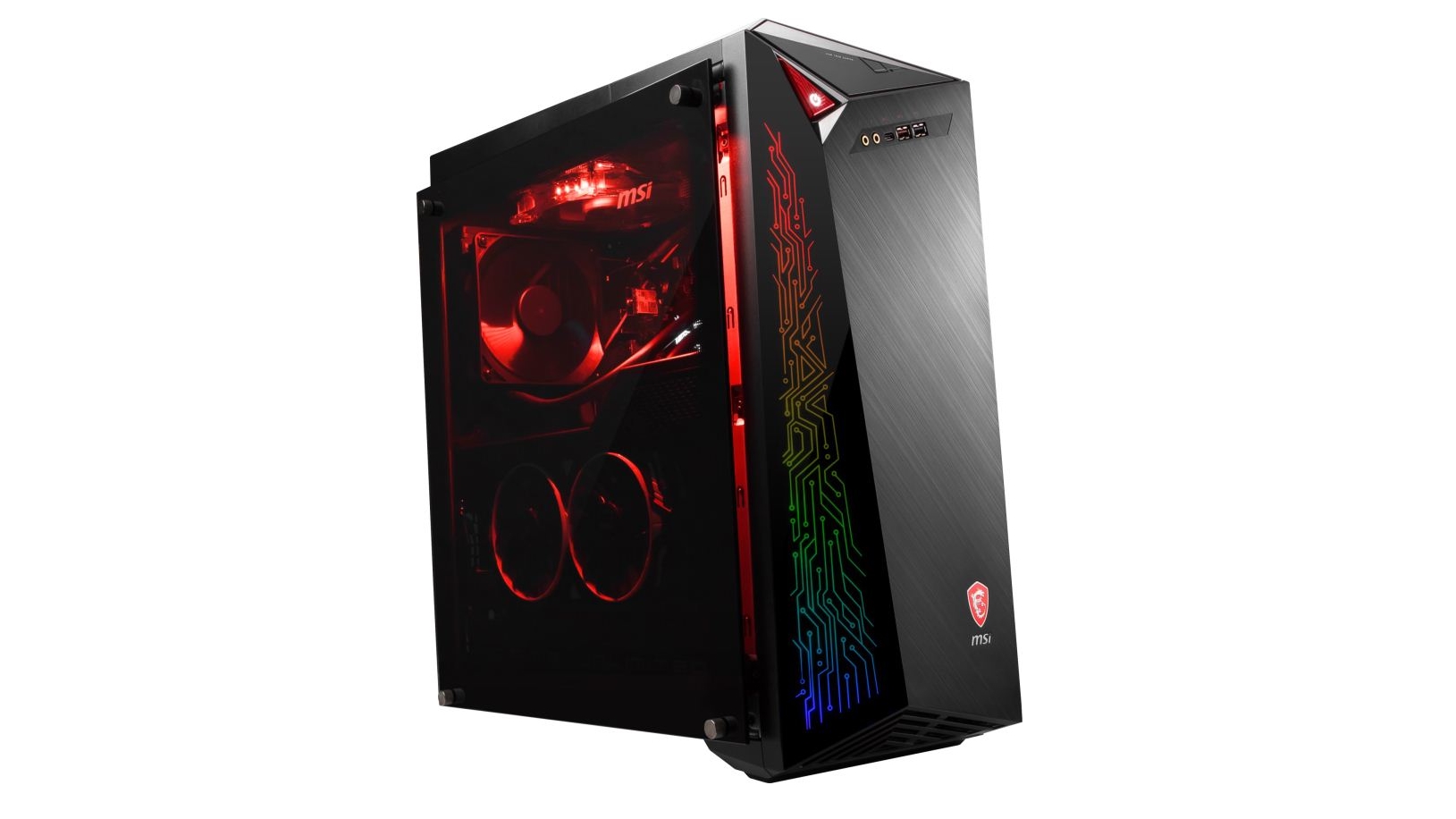
MSI Infinite X
The MSI Infinite X is another impressive-looking desktop PC which combines eye-catching design with some truly powerful components, including an 8th-generation Intel Core i7-8700K, 16GB of RAM and an Nvidia GeForce GTX 1080Ti graphics card.
These are all kept cool thanks to a Silent Storm Cooling 3 Pro cooling system. The chassis itself is illuminated by MSI’s Mystic Light RGB LED lighting system, and the front features a brushed aluminum finish.
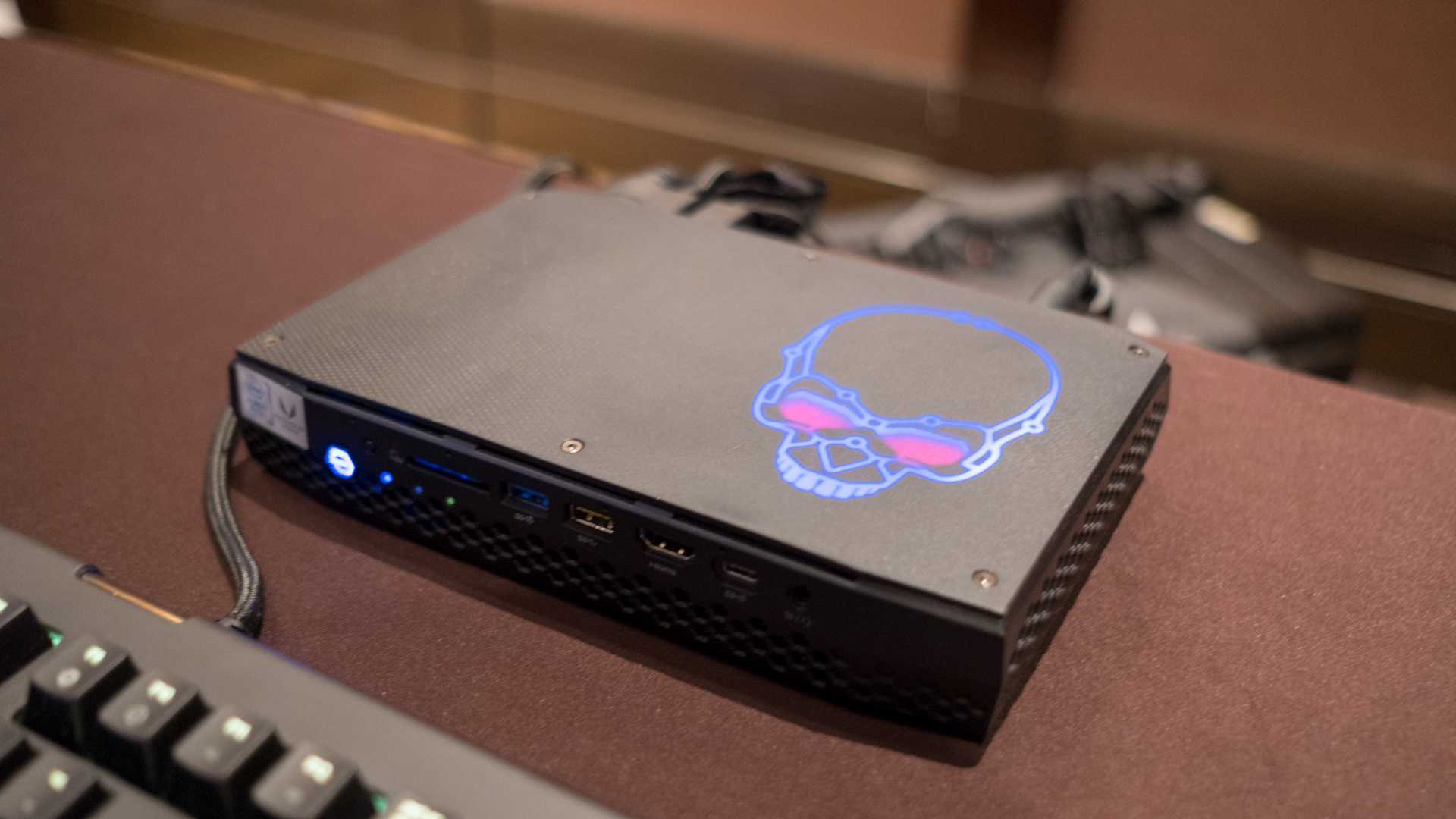
The Intel Hades Canyon NUC might not look like much compared to the rest of these towers of power, but it's one of the smallest VR-capable computer you can buy. Introduced as the poster child of Intel's new Kaby Lake-G processors that combines the power of an quad-core CPU with a discrete-class GPU into a single compact chip.
Intel claims this combo allows its Hades Canyon NUC to deliver performance equivalent to a gaming laptop with an Nvidia GTX 1060 Max-Q GPU. That's a ton of horsepower packed into a chassis that's just 1.2 liters in volume.
- New year, new tech – check out all our coverage of CES 2018 straight from Las Vegas, the greatest gadget show on Earth!

Matt is TechRadar's Managing Editor for Core Tech, looking after computing and mobile technology. Having written for a number of publications such as PC Plus, PC Format, T3 and Linux Format, there's no aspect of technology that Matt isn't passionate about, especially computing and PC gaming. He’s personally reviewed and used most of the laptops in our best laptops guide - and since joining TechRadar in 2014, he's reviewed over 250 laptops and computing accessories personally.